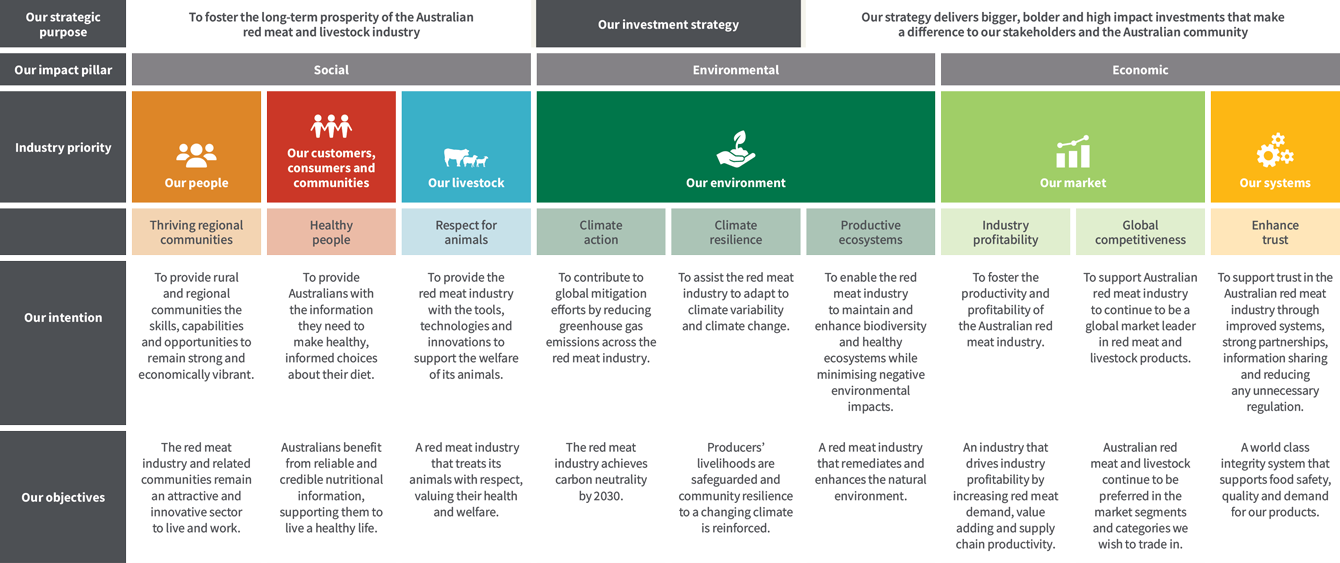Investments
Measuring the efficiency and effectiveness of MLA’s investments
All MLA programs are evaluated on a regular basis using a comprehensive Triple Bottom Line (TBL) evaluation framework. This allows MLA to calculate investment returns in a systematic and timely basis rather than relying on a five-year evaluation cycle, as well as the ability to continuously monitor the timing and value of the economic, social and environmental benefits derived from MLA’s investments.
MLA’s TBL evaluation includes reporting on the direct benefits to MLA stakeholders (within the red meat industry), as well as the second-round benefits to the Australian community (consumers, non-red meat industry sectors etc) arising from MLA investments.
As part of the framework, MLA has also developed a comprehensive greenhouse gas model for the red meat industry. This allows MLA to model the potential or actual emissions reduction from its environmental investments in carbon or methane-reducing products and track progress towards the industry target of carbon neutrality by 2030 (CN30).
MLA TBL evaluation framework is embedded within MLA’s planning, project selection and reporting processes, so as to maximise the impacts from MLA’s investment portfolio.
